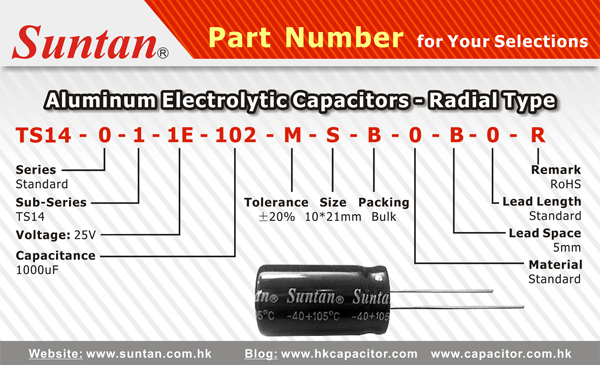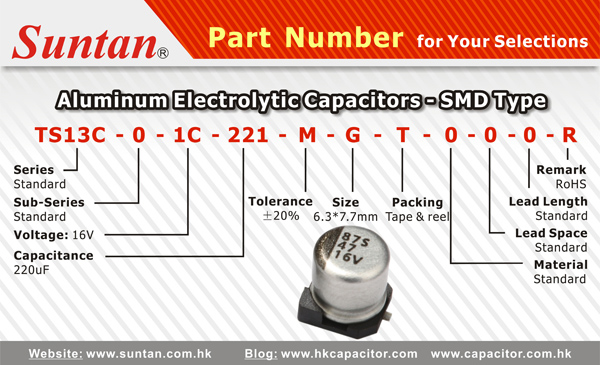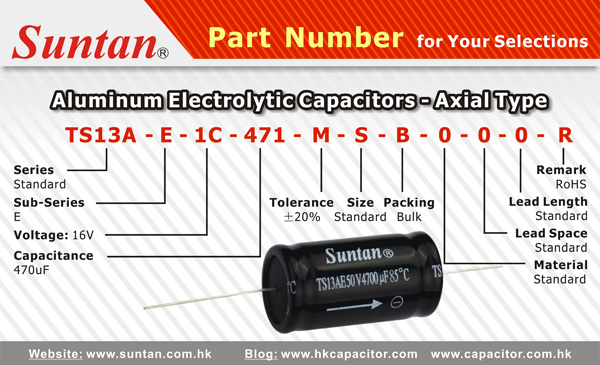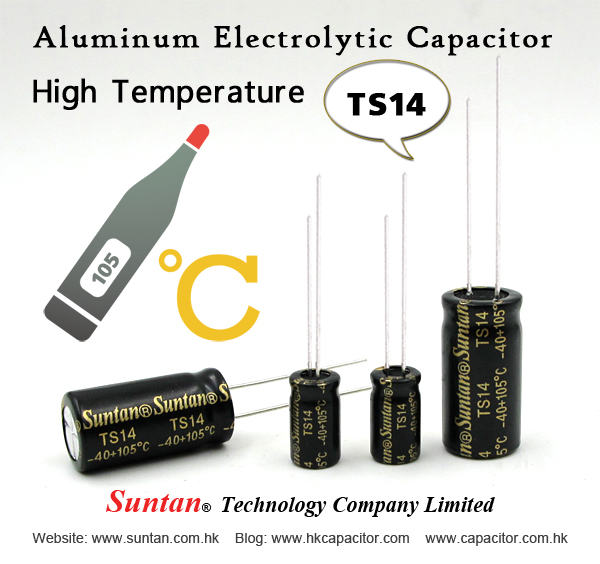How to Order Suntan TS14 Aluminum Electrolytic Capacitors
Suntan Technology Company Limited
---All Kinds of Capacitors
| Product Category | Product Description |
| Aluminum Electrolytic Capacitors | Aluminum Electrolytic Capacitors - Radial Type |
| How to Order Suntan Products | |
| Example: P/N | Example: Item Description |
| TS14011E102MSB0B0R | E-Cap 1000uF 25V +/-20% 10x21 P:5 105C RoHS |
| Series | Sub- | Voltage | Capacitance | Tolerance | Size | Packing | Material | Lead Space | Lead Length | Remark | |
| TS14 | 0 | 1 | 1E | 102 | M | S | B | 0 | B | 0 | R |
| Series: | TS14 |
| Sub-Series: | 1(TS14) |
| Voltage: | 6.3 ~ 100V.DC, 160 ~ 450V.DC |
| Capacitance: | 0.1uF ~ 22000uF |
| Tolerance: | (M)+/-20% |
| Size: | S(Standard) |
| Packing: | B(Bulk) |
| Material: | 0(Standard) |
| Lead Space: | B (5.08mm) |
| Lead Length: | 0(Standard) |
| Remark: | R(RoHS) |
More products details please check : http://www.suntan.com.hk/Aluminum-Electrolytic-Capacitors/Radial.html
More part number details please check : http://www.suntan.com.hk/guide.pdf








